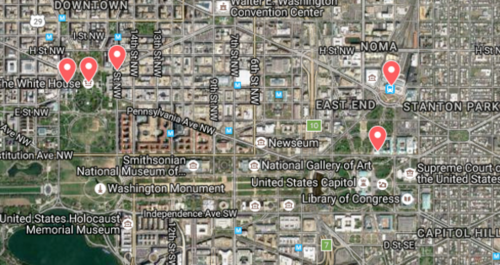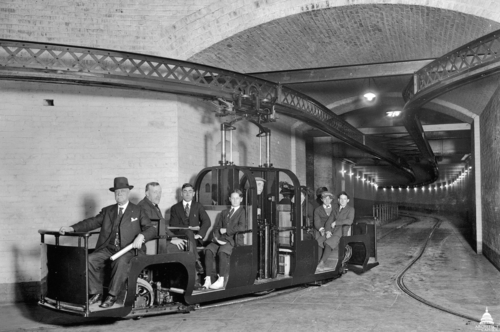More than a half a century before Metro, the Washington Post proposed building a downtown subway

Image from the Washington Post.
It’s been a busy 10 months since our leadership transition process began. And ahead of our big news next week, and in honor of Emancipation Day in DC, GGWash’s staff decided to take today off. But we didn’t want to leave you empty-handed.
Here’s a piece that was first published on August 31, 2016. the piece offers an interesting peek at the need and demand for public transit even in 1909. Enjoy!
Talk of a subway in DC first appeared in the Washington Post way back in 1909. At the time, the idea was just to run a small loop between the Capitol building and the White House.
An intriguing but strange Washington Post article, published in 1909, pushed for the subway. There’s no author listed and it doesn’t say it’s from the editorial board, so it’s unclear exactly who at the Post was behind the effort.
The proposed subway loop would have run through the basements of government buildings in the heart of downtown. The proposed line also included stations under the Corcoran, Center Market, and four of the city’s leading hotels.
Unlike our modern Metrorail system, the 1909 proposal notably did not have any stations in suburban residential areas for commuters. This is partially because a large suburban population didn’t exist yet, and partially because the development that did exist was supported by a robust streetcar network.
The primary purpose of the subway would have been to serve government employees, but as the Post suggested, “The common people might well be permitted to derive some of the advantages and benefits of its use, when those wearing togas and solemn visages do not tax the system to its utmost capacity.”
Inspiration for the subway came from the tunnel system built in March of the same year that connected the Russell Senate Office Building with the Capitol. The tunnel boasted a primitive people-mover that ran on tracks set into the floor.
The Washington Post saw the Russell subway as a nucleus that could be expanded “from the Senate Office Building to the Union Station, thence to Treasury corner, the White House, the State, War and Navy Building.”
Unlike WMATA’s massive standalone stations, the Russell subway was “a narrow gauge affair” that ran back and forth from one building to another. The “stations” were really just basement rooms. The Post didn’t provide any clarification on whether these basement stations were supposed to be the model for the larger subway system.
It is incredible to imagine what a subway system that ran through tunnels linking the White House, Capitol, hotels, and markets, with stops in Congressional building basements, would look like today.
The mass transit system pitched by the Washington Post was never built. The District already had reliable streetcar service, and construction of the impractical subway would have been very costly.
But the Post’s ideas, which predated WMATA by half a century, was referenced in the 1960’s as evidence of the need for more mass transit in Washington.
An expanded version of this post appears on the Architect of the Capital blog.


